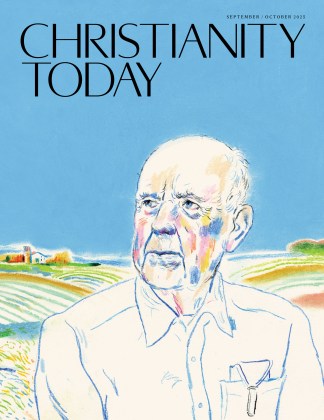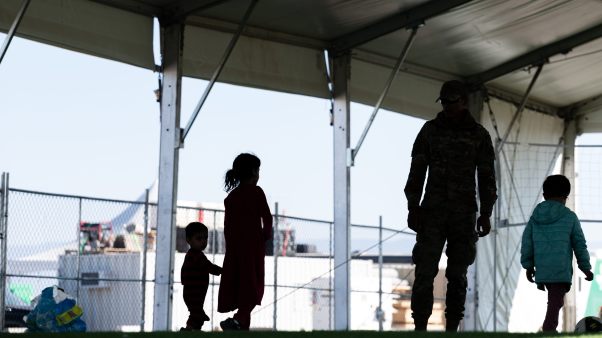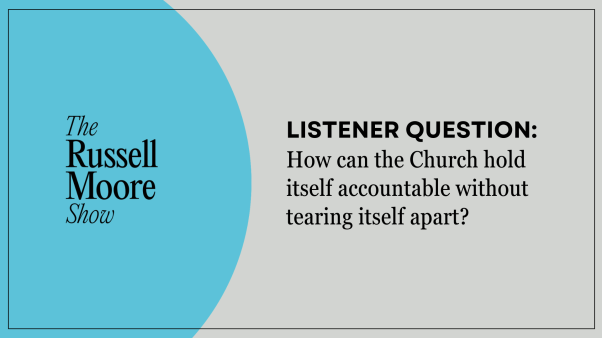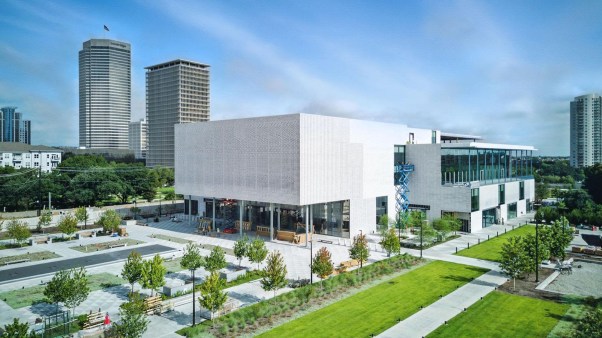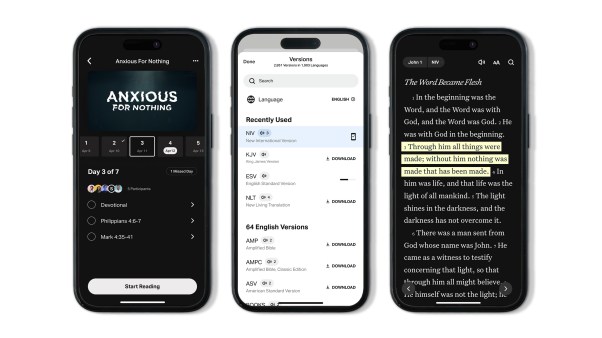My own approach to Reformation studies has been greatly shaped by the authors of these five classic studies, each of whom I have been privileged to know personally. George Huntston Williams was my major professor and great friend at Harvard University, and I serve now as his literary executor. The first book I published was in a series edited by Heiko Oberman, a scholar of enormous energy and one of the finest classroom teachers I have known. Roland Bainton was a marvelous storyteller and had a distinctive knack for making history come alive. Jaraslav Pelikan was a scholar who transcended limits. He was a master linguist and wrote with sterling clarity. Patrick Collinson I met only once at a conference on the Pilgrims at Plymouth Plantation. I have learned more about the Puritans from him than from anyone else.
 |
Here I Stand Roland H. Bainton |
This book was first published in 1950, the year I was born. I first read it as an undergraduate, and it hooked me on the Reformation. Here I Stand tells the story of Luther as it has never been told before or since. Doctor Martinus almost steps off every page, a real human being beset by guilt but saved by grace. The woodcuts Bainton included in this book are a visual feast of Reformation iconography.
|
* * * |
 Even the early Yuletides, before I knew Christ, remain unforgettable. For Santa Claus emerged each Christmas Eve, armed with a broom, demanding that we eight youngsters confess our misdemeanors; then, forgiving all, he stuffed our stockings with holiday treats.My circle of Christmas widened quickly when as a young newspaperman I found Christ. College and seminary days brought into that circle many now serving him in worldwide vocational commitments. Then faculty-student years multiplied friendships with young intellectuals who today fill many posts of spiritual leadership.Christmas Eve is the time for sharing gifts in our home. But the first hour is set aside for reading greetings that come from near and far. Life, after all, has few higher treasures than loyal friends. In recent years the size of the CHRISTIANITY TODAY family has made it quite impossible to reciprocate every greeting personally. So to the twice-born family of God, here is my heartfelt wish: May the incarnate Lord’s birthday signal for each one the profoundest of personal joys.Memorable is a Christmas my wife Helga and I spent in the old city of Jerusalem several years ago. Worshiping in Bethlehem’s Shepherds’ Fields and in the beautiful Jordan YMCA (now scarred by war damage), hearing jubilant midnight chimes from St. George’s, and strolling through the Holy City on Christmas Day left indelible entries in this editor’s notebook of Christmas experiences. Even the early Yuletides, before I knew Christ, remain unforgettable. For Santa Claus emerged each Christmas Eve, armed with a broom, demanding that we eight youngsters confess our misdemeanors; then, forgiving all, he stuffed our stockings with holiday treats.My circle of Christmas widened quickly when as a young newspaperman I found Christ. College and seminary days brought into that circle many now serving him in worldwide vocational commitments. Then faculty-student years multiplied friendships with young intellectuals who today fill many posts of spiritual leadership.Christmas Eve is the time for sharing gifts in our home. But the first hour is set aside for reading greetings that come from near and far. Life, after all, has few higher treasures than loyal friends. In recent years the size of the CHRISTIANITY TODAY family has made it quite impossible to reciprocate every greeting personally. So to the twice-born family of God, here is my heartfelt wish: May the incarnate Lord’s birthday signal for each one the profoundest of personal joys.Memorable is a Christmas my wife Helga and I spent in the old city of Jerusalem several years ago. Worshiping in Bethlehem’s Shepherds’ Fields and in the beautiful Jordan YMCA (now scarred by war damage), hearing jubilant midnight chimes from St. George’s, and strolling through the Holy City on Christmas Day left indelible entries in this editor’s notebook of Christmas experiences. |
The Radical Reformation George Huntston Williams |
Williams argued that the Radical Reformation deserved scholarly attention in its own right, not merely as a reactionary "left wing" to other movements. This book traces the interconnections among a multitude of radical reformers, all of whom challenged the ecclesial and political structures of their time in their quest for an authentic Christianity. Williams himself coined the term "Radical Reformation" and provided a typology for understanding this amorphous movement. The Radical Reformation, he argues, consisted of three major thrusts: Evangelical Anabaptists, Spiritualists, and Evangelical Rationalists. These are not meant to be hard and fast categories but a way to understand essential themes and common patterns among the religious dissenters who stood on the margins of the official churches of the 16th century. This is a book filled with theological insight as well as massive historical detail.
|
* * * |
 One of the most striking statements to come from the Second Vatican Council is found in the Decree on Ecumenism. Here we find the Roman church speaking of a hierarchy, not of offices, but of truths. In one place, Catholic theologians are reminded that a distinction between doctrines must be made in light of the fact that an order of truths exists within Catholic truth; the order is hierarchical in that the truths do not all bear the same relation to the fundamental center of Christian faith. This thought is expressed in connection with ecumenical dialogue; only in recognition of the hierarchy of truths, it is said, can the way be found to stimulate both sides to “a deeper knowledge and a clearer revelation of the unfathomable riches of Christ.”It is no surprise that the introduction of this idea aroused considerable stirring in the council. The Italian bishop Pangrasio first proposed it in 1963, and it was included in the Decree on Ecumenism on October 7, 1964.Pangrasio was moved to propose the hierarchy-of-truth idea by his intense concern about the divisions of the church. He thought the Decree on Ecumenism as it originally stood was too abstract; he wanted some kind of concrete indication of how the “separated brothers” could be reunited on the basis of the one and only foundation, Jesus Christ. When he suggested the notion of a hierarchy of truths, and when it was actually accepted, many people were surprised. And its meaning was not wholly clear. What was the actual significance of admitting a difference in order of importance between truths of the Catholic faith and the one foundational truth, Jesus Christ?Since then this idea has been increasingly under discussion. In fact, someone is now writing a dissertation in which he attempts to show that the notion of a hierarchy has antecedents in the thought of the fathers and of St. Thomas. Many praised its inclusion in the decree. Rahner called it one of the great decisions of the council; Schillebeeckx speaks of it as a new conciliar development.It was injected into the council quite unexpectedly. But Pangrasio apparently struck a sympathetic note with it, and found it receiving surprising acceptance. Rather than putting it into the hands of a committee and thus killing it until Vatican III, the council set it directly within the decrees.With this, we see another sign of change since the encyclical of 1928 that was directed against the ecumenical movement (Mortalium animos). In that encyclical the notion of a distinction between fundamental and non-fundamental doctrines was rejected. Such a distinction was unacceptable: since all doctrines were revealed by God himself, none could be counted less important than any other. This had always been Rome’s understanding. So with the new decree a longstanding tradition was broken.Luther and Calvin made a distinction between central and peripheral doctrines. And they knew (in regard to the Church) that not all doctrines lay equally close to the center, Jesus Christ. Naturally, the criterion by which the central doctrines are distinguished from the peripheral is not easy to determine. But anyone reflecting on the catholicity of the Church must come to a distinction similar to that made by Pangrasio, even though he may view the content of the hierarchy of truths quite differently.And here lies the problem of all ecumenicity. Every church is involved with the problem in some form; each church is aware of the divisions and variations in doctrinal emphasis among the churches. For this reason it is of interest to us that Pangrasio saw his desire crowned with success, and that Vatican II acknowledged the existence of the problem.The consequences of this admission are not yet foreseeable. There is, of course, no implication of a quantitative reduction of things the Catholic Church holds to be true. If there were, the statement would never have gotten into the decree. Pangrasio himself used the idea of primary and secondary truths—a distinction no more helpful than the Protestant distinction between fundamental and non-fundamental truths. But the significant thing is that the problem was raised and admitted, regardless of the questions remaining about the criterion for determining which truths are primary and which secondary.Since the council, profound questions have been asked. For instance, is the doctrine of Mary less central than the confession of the Incarnation? Is the doctrine of Jesus Christ the only primary doctrine? Hearing these questions, a Protestant may be inclined to smile and say that they prove that, despite all the talk, nothing has really changed and nothing can really change in Rome. But if this were so, the statement would not have been included in the decree. That it was set within one of the major documents of the council shows how seriously it was taken. This was no mere tactical device; it shows that Rome is convinced that its former anathemas and censures are no longer useful, at least not so long as it is aware that Jesus Christ is indeed the foundation of Christian unity.The Decree on Ecumenism sets the problem in focus; it does not give an answer. What its significance will be and how it will be applied is anyone’s guess. The future is never determined by the writing of statements. But the decree does put on the agenda a question that is the concern of every church in the crisis of our divisions. It touches on the depths of the mystery of Christ, on the reality of the one Shepherd, who himself talked about the one thing needful.If this is what is involved in the conciliar Decree on Ecumenism, we can truly speak of a new and striking development. Pangrasio was not being a crypto-Protestant, to be sure. But he did point to a matter that involves Protestantism also: the mystery of Christ in the midst of our fallible and sinful human reality. Thus, it was not his problem alone; it is a problem that faces us all. One of the most striking statements to come from the Second Vatican Council is found in the Decree on Ecumenism. Here we find the Roman church speaking of a hierarchy, not of offices, but of truths. In one place, Catholic theologians are reminded that a distinction between doctrines must be made in light of the fact that an order of truths exists within Catholic truth; the order is hierarchical in that the truths do not all bear the same relation to the fundamental center of Christian faith. This thought is expressed in connection with ecumenical dialogue; only in recognition of the hierarchy of truths, it is said, can the way be found to stimulate both sides to “a deeper knowledge and a clearer revelation of the unfathomable riches of Christ.”It is no surprise that the introduction of this idea aroused considerable stirring in the council. The Italian bishop Pangrasio first proposed it in 1963, and it was included in the Decree on Ecumenism on October 7, 1964.Pangrasio was moved to propose the hierarchy-of-truth idea by his intense concern about the divisions of the church. He thought the Decree on Ecumenism as it originally stood was too abstract; he wanted some kind of concrete indication of how the “separated brothers” could be reunited on the basis of the one and only foundation, Jesus Christ. When he suggested the notion of a hierarchy of truths, and when it was actually accepted, many people were surprised. And its meaning was not wholly clear. What was the actual significance of admitting a difference in order of importance between truths of the Catholic faith and the one foundational truth, Jesus Christ?Since then this idea has been increasingly under discussion. In fact, someone is now writing a dissertation in which he attempts to show that the notion of a hierarchy has antecedents in the thought of the fathers and of St. Thomas. Many praised its inclusion in the decree. Rahner called it one of the great decisions of the council; Schillebeeckx speaks of it as a new conciliar development.It was injected into the council quite unexpectedly. But Pangrasio apparently struck a sympathetic note with it, and found it receiving surprising acceptance. Rather than putting it into the hands of a committee and thus killing it until Vatican III, the council set it directly within the decrees.With this, we see another sign of change since the encyclical of 1928 that was directed against the ecumenical movement (Mortalium animos). In that encyclical the notion of a distinction between fundamental and non-fundamental doctrines was rejected. Such a distinction was unacceptable: since all doctrines were revealed by God himself, none could be counted less important than any other. This had always been Rome’s understanding. So with the new decree a longstanding tradition was broken.Luther and Calvin made a distinction between central and peripheral doctrines. And they knew (in regard to the Church) that not all doctrines lay equally close to the center, Jesus Christ. Naturally, the criterion by which the central doctrines are distinguished from the peripheral is not easy to determine. But anyone reflecting on the catholicity of the Church must come to a distinction similar to that made by Pangrasio, even though he may view the content of the hierarchy of truths quite differently.And here lies the problem of all ecumenicity. Every church is involved with the problem in some form; each church is aware of the divisions and variations in doctrinal emphasis among the churches. For this reason it is of interest to us that Pangrasio saw his desire crowned with success, and that Vatican II acknowledged the existence of the problem.The consequences of this admission are not yet foreseeable. There is, of course, no implication of a quantitative reduction of things the Catholic Church holds to be true. If there were, the statement would never have gotten into the decree. Pangrasio himself used the idea of primary and secondary truths—a distinction no more helpful than the Protestant distinction between fundamental and non-fundamental truths. But the significant thing is that the problem was raised and admitted, regardless of the questions remaining about the criterion for determining which truths are primary and which secondary.Since the council, profound questions have been asked. For instance, is the doctrine of Mary less central than the confession of the Incarnation? Is the doctrine of Jesus Christ the only primary doctrine? Hearing these questions, a Protestant may be inclined to smile and say that they prove that, despite all the talk, nothing has really changed and nothing can really change in Rome. But if this were so, the statement would not have been included in the decree. That it was set within one of the major documents of the council shows how seriously it was taken. This was no mere tactical device; it shows that Rome is convinced that its former anathemas and censures are no longer useful, at least not so long as it is aware that Jesus Christ is indeed the foundation of Christian unity.The Decree on Ecumenism sets the problem in focus; it does not give an answer. What its significance will be and how it will be applied is anyone’s guess. The future is never determined by the writing of statements. But the decree does put on the agenda a question that is the concern of every church in the crisis of our divisions. It touches on the depths of the mystery of Christ, on the reality of the one Shepherd, who himself talked about the one thing needful.If this is what is involved in the conciliar Decree on Ecumenism, we can truly speak of a new and striking development. Pangrasio was not being a crypto-Protestant, to be sure. But he did point to a matter that involves Protestantism also: the mystery of Christ in the midst of our fallible and sinful human reality. Thus, it was not his problem alone; it is a problem that faces us all. |
The Elizabethan Puritan Movement Patrick Collinson |
This book was first published in 1967 and helped to define the entire field of Puritan studies. Collinson interprets the Puritans in terms of their own self-understanding and burning desire for a "further reformation." A model of historical research based on extensive use of primary sources.
|
* * * |
 |
Reformation of Church and Dogma (1300-1700) Jaroslav Pelikan |
This is the third volume in Pelikan's five-volume set, The Christian Tradition. The cover of each of these volumes is marked by a distinctive color: red for the early church (symbolizing martyrdom), gold for Eastern Christendom (glory), purple for the Latin West (suffering), and sky blue for modernity (the sky is the limit?). The Reformation volume in this series is green—signifying renewal, new life, new beginnings. The chronological parameters place the Reformation in the context of late medieval and early modern times. Like nearly everything Pelikan wrote, this is a work of magisterial extent and nuanced detail. Historical theology at its best.
|
* * * |
 Pró•testn., an expression or declaration of objection, disapproval, or dissent, often in opposition to something a person is powerless to prevent or avoid.…The Random House Dictionary of the English Language. Protest was Protestant word number one in 1967. And Viet Nam, more than anything else, was the target.By last month even President Johnson couldn’t worship in peace without a clergyman criticizing his policies. But then the Rev. Cotesworth Pinckney Lewis of Williamsburg, Virginia, was only getting equal time for soothing sermons on the war preached by such Johnsonians as George Davis of the National City Christian Church.From the National Council of Churches building in New York and other old- and new-left offices across the country came other critiques and plans for mass protest demonstrations and draft-card turn-ins. In a year of often bitter debate, the Defense Department provided comic relief by banning from military Sunday Schools a Presbyterian paper that printed a young girl’s anti-napalm poem.Despite foot troubles, Father James Groppi applied King march strategy to Milwaukee, dubbed the “Selma of the North” for the ecumenical protest against the city’s refusal to pass a fair-housing ordinance. Nationally, Negro churchmen struggled to salvage gains with whites and to recast “black power” into a positive, legitimate concept in the face of incitement by extremists and the worst rash of riots in American history. Working capital for Negro self-improvement was the answer, many churchmen thought. In Project Equality, the anti-Kodak campaign, and other efforts churchmen tried for social leverage through church wealth.For some, particularly those at the microphone at the NCC’s Church and Society Conference in riot-scarred Detroit, morally “justified” violence was the Christian answer to “systemic” repression in the society.Other issues: Many Protestants lobbied against Catholics to liberalize strict state abortion laws. The Amish said state laws requiring high-school attendance violated their religious freedom, and many threatened to move to Latin America. Protestants—even Baptists with college and hospital budgets to meet—joined Catholics in the federal-aid lines. But in one of the year’s most dramatic protests, nearly three-fourths of New York’s 4.7 million voters rejected a new state constitution that would have eased a flat ban on aid to church schools.As the year opened congregations faced a tight mortgage market; when it closed, missions suffered international financing woes as Britain devalued the pound sterling.Evangelicals in the Church of England issued a comprehensive manifesto on social problems, and even the Southern Baptist Convention showed signs of social life. In his most important encyclical, Pope Paul VI made a moderate, Bible—quoting appeal for justice and compassion in world economics.The biggest surprise of the year was the success of Israel’s six-day blitzkrieg after Arab goading. As soon as the world caught its breath, interfaith recriminations began rolling in, and prophetically minded Protestants cast a new look toward the Holy Land (see page 35).In theology, the word was mod́•ern (adj., of or pertaining to present and recent time …). The star was semi-Bishop James A. Pike, who won every possible victory from his embarrassed Episcopal colleagues. The bishops made heresy action near-impossible and may yet say there is no such thing as heresy. Then Pike topped them by revealing he’s now a spiritualist. North of the border, Ernest Harrison, who headed the Canadian Anglicans’ new curriculum, published a book denying God’s past, present, or future existence. Polls of NCC assembly delegates and 7,441 clergymen showed considerable doubt about traditional Christian beliefs. United Presbyterians in the U. S. ratified a liberalized confession, and New Zealand Presbyterians exonerated the dean of their only seminary, who questioned Bible authority, the Resurrection, and the miracles. In a reaction against similar views in Germany, conservatives rallied to the new “No Other Gospel” movement.As usual, the word for church affairs was ec•u•meń•i•cal (adj., of or pertaining to a movement, especially among Protestant groups since the 1800s, aimed at achieving universal Christian unity and church union through international interdenominational organizations that cooperate on matters of mutual concern …). But Rome was more and more in the picture, with some Anglicans and Protestants, maybe, hoping, perhaps, that the pope might be chairman of the board of Christendom someday. Catholic participation in the NCC and the American Bible Society increased. Biggest interchurch obstacles were Mary and marriage (mixed). Orthodox Patriarch Athenagoras made a historic visit to see his friend Pope Paul.Intra-Protestant mergers proceeded, the Episcopal Church voted further work toward a mass U. S. union, American evangelicals moved toward more tangible unity, and the charismatic movement—now including some Roman Catholics—oozed through the Church.In internal matters, Catholics continued to out-ferment the Protestants, with liturgical experiments, exodus of married priests, debates on celibacy and birth control, the National Catholic Reporter’s printing of the secret birth-control report to the Pope, a firing and rehiring at Catholic University, and a restructuring of the Vatican Curia.E•vań•ge•lism (n., the proclamation of the Gospel) was bigger news than you might have expected. Indonesia’s post-Sukarno mass revivals put “Christian” nations to shame. Christians remained under pressure in many countries, but Billy Graham ventured his first sermons in a Communist land and conducted a crusade in Tokyo that netted nearly as many professions of faith as there were Christians living in that city, the world’s largest. Canada’s Expo 67 reflected the current theological cleavage in its two Christian pavilions. In the United States, evangelism was a prime topic at the U. S. conference of the World Council of Churches and the Faith and Order meeting, and the American Baptist Convention tried to figure out what it was.Bomb(n., slang, an absolute failure; fiasco) of the year was Spain’s new “religious liberty” law, which put Protestants in a worse position than ever. Close runners-up: That super-secret first world synod of Catholic bishops. The little-noted nor long-remembered 450th anniversary of the Reformation, plus silly Communist stunting of the festivities at Wittenberg. The Communists’ celebration of the fiftieth anniversary of “freedom” while they continued repression of Christian and Jewish minorities. Superficial Christian—Marxist dialogues. The lack of religious reflections in Svetlana Stalin’s book. And the petty United Nations debate on a religious freedom charter.PERSONALIARepublican presidential candidate George Romney provided Look with his 1955–1966 income-tax returns. The Michigan governor gave 17 per cent of his ,972,923.58 adjusted gross income to the Mormon church.Evangelist Billy Graham was hospitalized with pneumonia and had to miss annual meetings of his board in White Sulphur Springs, West Virginia.Francis J. Matthews, director of community relations for the Job Corps in Washington, D. C., resigned from the Roman Catholic priesthood and married his former diocesan secretary November 8. Last year he was fired as publicist for the St. Louis archdiocese.Anglican Primate Howard H. Clark charged that the Canadian government could double its foreign aid by eliminating “unnecessary expenditures” at home.Mrs. Hazel Jean Robinson won ,000 damages in an auto-crash lawsuit in the Ontario Supreme Court, including ,300 for the services of a Christian Science practitioner who prayed for her from Chicago by telephone.Hugh McCullum, 35, a secular newsman, will become the first layman to edit the Canadian Churchman in the Anglican paper’s ninety-six year history.Canada’s Supreme Court upheld Dutch—born metalworker Dirk Hoogendoorn’s religious refusal to pay union dues. The Christian Reformed layman, a member of the Christian Labor Association, says unions support “class struggle and socialism.”Spanish author Vicente Silio, who wrote that Jesus had brothers, was acquitted of charges of “scoffing at the Catholic religion.”Maharashi Mauessh Yogi, founder of India’s transcendental meditation cult, said he will “retire” next year. Mia Farrow, 22, estranged wife of Frank Sinatra, says she plans to visit the mystic for a month early next year.The Dutch government attached the salary of Baptist pastor P. B. Huizinga, who withheld 15 per cent of his income tax to protest military expenditures.The Danish Baptist weekly reports that a Baptist pastor in Burundi, W. D. Nyakamwe, has been jailed for an antigovernment statement in a letter the post office censored.Archbishop George Hakim, 59, new Melkite Patriarch of the 500,000 Arabic Byzantine Catholics, faces a problem, since the two traditional seats of the Antioch patriarchate are in Cairo and Damascus, both hotbeds of anti-Israel feeling. Hakim, born in Egypt of Lebanese parents, once was an Arab nationalist but is now a citizen of Israel.PROTESTANT PANORAMAThe Episcopal Church of Our Merciful Saviour, Louisville, Kentucky, is the first church to receive urban-renewal funds for building renovation, and an African Methodist church there hopes for a similar deal. The 3 per cent, ,000 loan is under the 1965 housing act.The Episcopal quarterly Church in Metropolis will now be sponsored also by United Presbyterians, Methodists, and the United Church of Christ.Next month some 100,000 United Presbyterians will receive the first edition of a four-page tabloid, The Presbyterian Layman, published by the conservative Presbyterian Lay Committee. Layman Editor Howard Earl, formerly an editor of Science Digest, was not among the forty-two journalists who inquired about the job through a large “blind” ad in Editor and Publisher.The Methodist social-concerns board joined eight other groups in urging the U. S. Supreme Court to review the constitutionality of treating drunkenness as a crime.The Union, New Jersey, clergy association protested display of a nativity scene at the Municipal Building. Pending an Oregon Supreme Court ruling, the cross on a hill overlooking the city of Eugene is still glowing this Christmas.A survey shows forty-five cooperative groups among the major Lutheran denominations are formed or forming in local areas.The Church of the Nazarene gained 7,532 members in the United States and 12,938 overseas in the past year, for a world membership of 453,187. Per-capita giving increased to 0.13.The parish council of Berlin’s historic Kaiser Wilhelm Church refused to let seven campus groups continue to meet there because “some student chaplains pay more attention to politics than to their spiritual duties.” Bishop Kurt Scharf condemned the action.The Dutch Reformed Church voted to permit local churches to call women pastors.St. Mary’s Anglican Church of Woolwich, England, wants a license to sell alcohol at a bar in the crypt to attract the sophisticated under-21 crowd and teach them to “drink sensibly.”MISCELLANYThe entire Franciscan seminary in Santa Barbara, California, and the first two classes at San Francisco Theological Seminary (United Presbyterian) will relocate at Berkeley’s ecumenical Graduate Theological Union, which also encompasses Jews and Unitarians.Civic leaders in Jackson, Mississippi, offered ,000 for information on the November 21 bombing of the home of Rabbi Perry Nussbaum, who said, “I came within one foot of being dead.” Three days earlier local Methodist renewal-center director Robert Kochtitzky and guest John P. Adams, national Methodist social-concerns publicist, escaped serious injury when his home was bombed.New York City’s Protestant Council refused to place the Lutheran film The Antkeeper (November 24 issue, page 42) on local TV, partly because it makes God too judgmental and the three-storied universe too literal. Strangely, the incarnational analogy was written by Rolf Forsberg, whose Parable film has been sold and rented to wipe out the council’s World’s Fair debts.Portugal’s Cardinal Cerejeira, 79, a close friend of Premier Salazar since they were fellow seminary students together, urged the Church to stay out of politics and confine its work to spiritual matters. The sermon was considered an answer to Catholics who are critical of the regime on the basis of papal social encyclicals.The leader of France’s 550,000 Jews charged that President de Gaulle’s recent statement that Jews have always been “an elite people sure of itself and domineering” was anti-Semitic.Christians and Muslims appear to enjoy a thaw in relations with Yugoslavia’s Communist government, Religious News Service reports. Publicity about religious figures and events is increasing.Hungarian ministers in the United States are protesting the reported arrest of three churchmen in Hungary: the Rev. Balint Kovacs, and two laymen charged with re-establishing banned youth groups.The Russian Orthodox Church has permission to print the first complete edition of the Bible since the Bolshevik Revolution fifty years ago, Metropolitan Nikodim reported on his recent U. S. tour. |
Luther: Man Between God and the Devil Heiko A. Oberman |
Originally published in German in 1982, this book is a masterpiece of Reformation history and theology. Oberman gives us a vivid account of Luther, his personal struggles, and his ecclesial import, all set in the context of the culture of late medieval society. Oberman's portrayal of an apocalyptic Luther, haunted by the devil and living on the edge of time, is a corrective to more domesticated versions of the German reformer. By looking at Luther "warts and all," we can see more clearly the abiding validity of his reforming work and theological insights for the life of faith today.
|
* * * |
By Timothy George, author of Theology of the Reformers and General Editor of the Reformation Commentary on Scripture, forthcoming from InterVarsity Press
Copyright © 2009 by the author or Christianity Today/Christian History & Biography magazine. Click here for reprint information on Christian History & Biography.
